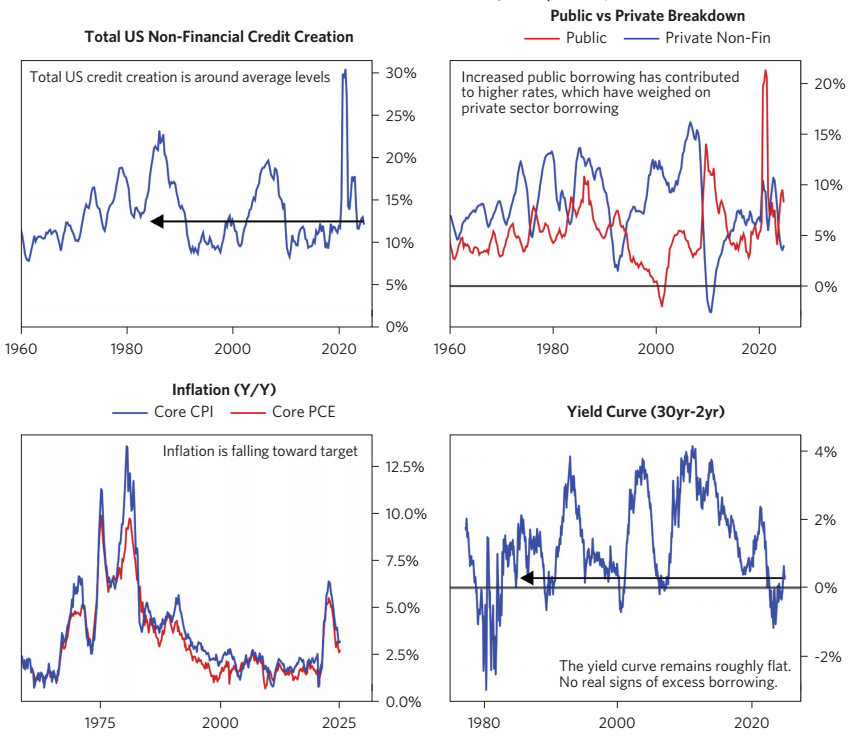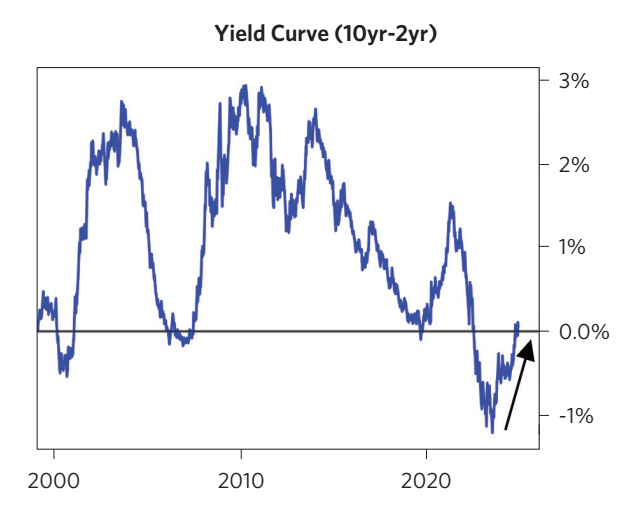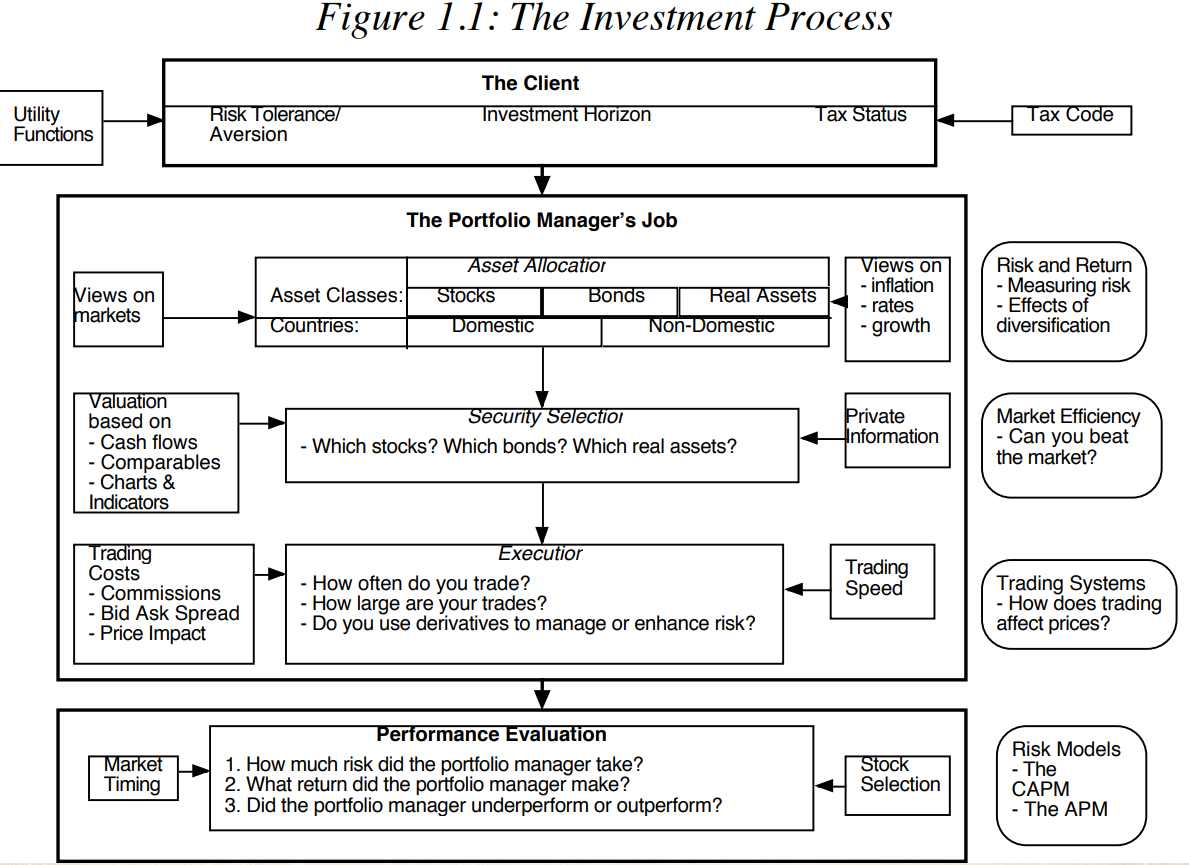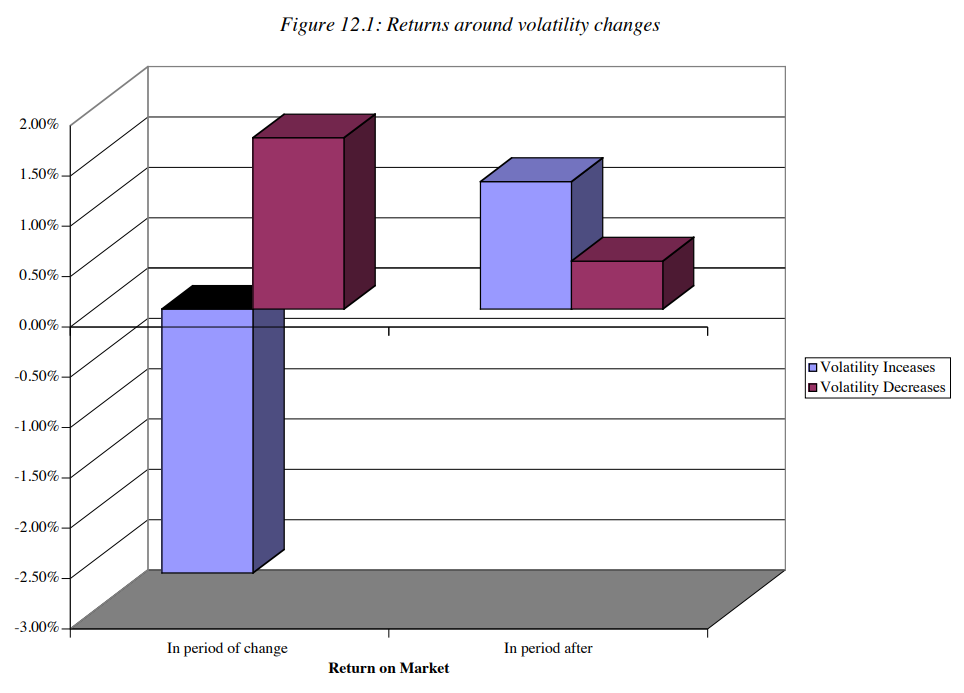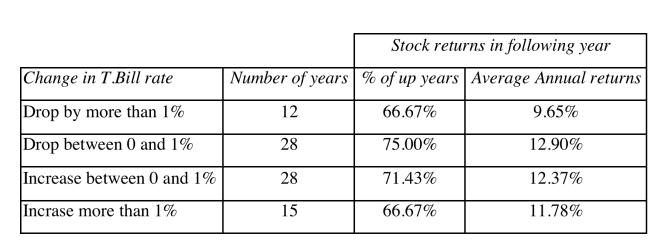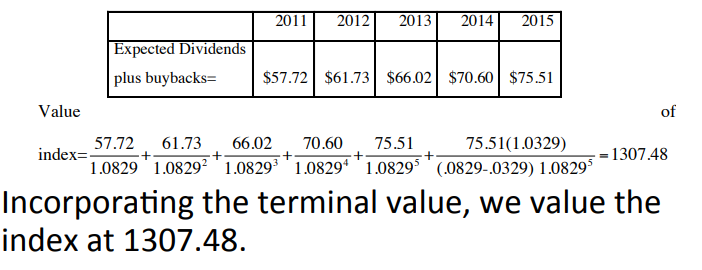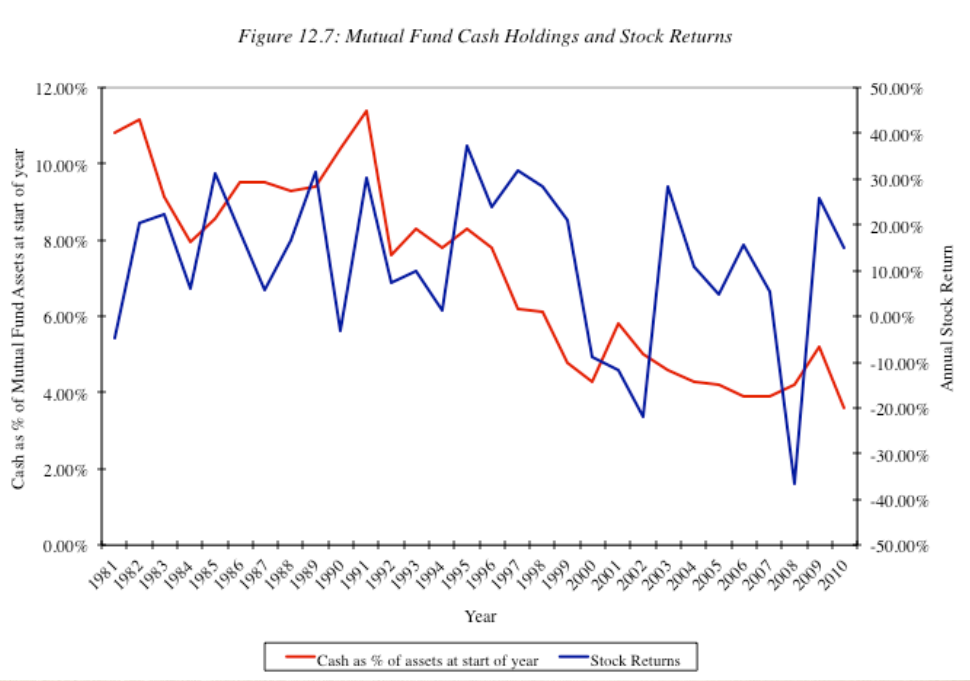Value at Risk – VaR
VaR is a probability statement about the potential change in the value of a portfolio.
Notation
$$Porb(x\leq VaR(X))= 1-c$$
$$ Prob\bigg(z \leq \frac{VaR(X)-\mu}{\sigma}\bigg)=1-c $$
- $c$ – confidence interval, i.e. $c=99\%$. Then $1-c = 1\% $
- $\mu$ and $\sigma$ are for $X$.
- For Example, if X is yearly return, then \mu_{252days}=252\cdot\mu_{1day}, and \sigma_{252days}=\sqrt{252}\cdot\sigma_{1day}
- $x$ here is the return. So, $c$ is the confidence interval, i.e. 99%.
- VaR focus on the tail risks. If x stands for return, then tail risk is on the left tail, z_{1-c}.
- If x is the loss, the tail risk is on the right tail. z_c
$$VaR(X) = \mu + \sigma\cdot \Phi^{-1}(1-c)$$
$$VaR(X) = \mu + \sigma\cdot z_{1-c}$$
If c=99\%, then 1-c=1\%, so z_{1-c}=z_{0.01} \approx -2.33
VaR(X) = \mu – 2.33\cdot \sigma
P.S.
The unit of VaR is the amount of loss, so it should be monetary amount. For example, if the total amount of portfolio is USD 1 million, then VaR = \$1m \cdot (\mu – 2.33\cdot \sigma).
Loss Distribution
Remember X is a distribution of loss. If we know the distribution of Portfolio Return R, R\sim N(\mu, \sigma^2), then what is the dist for X?
$$X \sim N(-\mu, \sigma^2)$$
Right! Loss is just the negative return. Also, the volatility would not be affected by plus / minus.
Expected Shortfall (ES)
Expected Shortfall states the Expected Loss during time T conditional on the loss being greater than the c^{th} percentile of the loss distribution.
Notation
$$ ES_c (X) = \mathbb{E}\bigg[ X|X\leq VAR_c(X) \bigg] $$
- Be attention here, X is a r.v., and x stands for return here! while the only variable in the ES_c(X) is c, the confidence level, instead of X.
- $c$ is the confidence level, i.e. $c$ = 99%.
- If x stands for return, then the VaR is the left-tail, z_{1-c}.
$$ ES_c (X) = \mathbb{E}\bigg[ X|X\geq VAR_c(X) \bigg] $$
- If x stands for loss (, which is the negative of return ), then the VaR is the right-tail, z_{c}.
Derivation
Notation Form
Consider, x is the return, then ES_c (X) = \mathbb{E}\bigg[ X|X\leq VAR_c(X) \bigg], and VaR_c(x)= \mu + z_{1-c}\sigma, where c is the confidence level c=99\% for example.
$$ES_c(X) = \frac{\int_{-\infty}^{VaR} xf(x)dx }{\int_{-\infty}^{VaR} f(x)dx } = \frac{\int_{-\infty}^{VaR} x \phi(x)dx }{\int_{-\infty}^{VaR} \phi(x)dx } =\frac{\int_{-\infty}^{VaR} x \phi(x)dx }{ \Phi(VaR) – \Phi(-\infty)} $$
$$= \frac{1}{ \Phi(VaR) – \Phi(-\infty) }\int_{-\infty}^{VaR}x \frac{1}{\sqrt{2\pi \sigma^2}} e^{-\frac{(x-\mu)^2}{2\sigma^2}} dx $$
Replace z = \frac{x-\mu}{\sigma}, then x = \mu + z \sigma, and dx = \sigma dz
$$ = \frac{1}{\Phi(VaR)} \int_{-\infty}^{VaR}(\mu + z\sigma) \frac{1}{\sqrt{2\pi \sigma^2}} e^{-\frac{z^2}{2}}\sigma dz $$
$$ = \frac{1}{\Phi(VaR)}\mu \int_{-\infty}^{VaR}\frac{1}{\sqrt{2\pi }} e^{-\frac{z^2}{2}} dz + \sigma^2\int_{-\infty}^{VaR} z \frac{1}{\sqrt{2\pi \sigma^2}} e^{-\frac{z^2}{2}} dz $$
$$ = \frac{1}{\Phi(VaR)}\mu \Phi(VaR) – \frac{\sigma^2}{\Phi(VaR)}\int_{-\infty}^{VaR} \frac{1}{\sqrt{2\pi \sigma^2}} e^{-\frac{z^2}{2}} d(-\frac{z^2}{2}) $$
$$ = \mu – \frac{\sigma^2}{\Phi(VaR)} \frac{1}{\sqrt{2\pi \sigma^2}} \int_{-\infty}^{VaR} e^{-\frac{z^2}{2}} d(-\frac{z^2}{2}) $$
$$ = \mu – \frac{\sigma}{\Phi(VaR)} \frac{1}{\sqrt{2\pi }} e^{-\frac{z^2}{2}} |_{-\infty}^{VaR} $$
$$ = \mu – \frac{\sigma}{\Phi(VaR)} \frac{1}{\sqrt{2\pi }} e^{-\frac{VaR^2}{2}}= \mu – \frac{\sigma}{\Phi(VaR)} \phi(VaR)$$
Recall, VaR_c(x)= \mu + z_{1-c}\sigma, so \phi(VaR_c(x))= \phi(\mu + z_{1-c}\sigma) \leftrightarrow \phi(z_{1-c}) = \phi\bigg( \Phi^{-1}(1-c) \bigg), and \Phi(VaR_c(x))= \Phi(\mu + z_{1-c}\sigma) \leftrightarrow \phi(z_{1-c}) = \Phi\bigg( \Phi^{-1}(1-c) \bigg) = 1-c.
Thus,
$$ ES_c(X) =\mu – \frac{\sigma}{\Phi(VaR)} \phi(VaR)=\mu -\sigma \frac{\phi\big( \Phi^{-1}(1-c) \big)}{1-c}$$
VaR Form
we ‘sum up’ (integrate) the VaR from c to 1, conditional on 1-c.
$$ES_c(X) = \frac{1}{1-c} \int_c^1 VaR_u(X)du$$
$$ ES_c(X) = \frac{1}{1-c} \int_c^1 \bigg( \mu + \sigma\cdot \Phi^{-1}(1-u) \bigg) du $$
$$ =\mu + \frac{\sigma}{1-c} \int^1_c \Phi^{-1}(1-u) du $$
We let u = \Phi(Z), where Z \sim N(0,1). Then,
- $du =d(\Phi(z)) =\phi(z) dz$.
- $u\in (c,1)$, so $z = \Phi^{-1}(u)\in (z_c \ , \infty)$
Thus,
$$ ES_c(X) =\mu + \frac{\sigma}{1-c} \int^{\infty}_{z_c} \Phi^{-1}\big(1-\Phi(z)\big)\phi(z) dz $$
As 1-\Phi(z) = \Phi(-z)
$$ ES_c(X) =\mu + \frac{\sigma}{1-c} \int^{\infty}_{z_c} \Phi^{-1}(\Phi(-z))\phi(z) dz = \mu – \frac{\sigma}{1-c} \int^{\infty}_{z_c} z\phi(z) dz $$
$ \int_{z_c}^{\infty} z \phi(z)dz = \int_{z_c}^{\infty} z \frac{1}{\sqrt{2\pi}}e^{-\frac{z^2}{2}}dz = -\frac{1}{\sqrt{2\pi}} \int_{z_c}^{\infty} -e^{\frac{z^2}{2}}d(e^{-\frac{z^2}{2}})$
$=\frac{1}{\sqrt{2\pi}}e^{-\frac{z_c^2}{2}}=\phi(z_c)=\phi\big(\Phi^{-1}(c)\big)$, bring it back to $ES_c(X)$
$$ES_c(X) = \mu – \sigma\frac{ \phi\big(\Phi^{-1}(c)\big)}{1-c}$$
Morden Portfolio Theory
- $x$ – vector weights
- $R$ – vector of all assets’ returns
- $\mu = \mathbb{E}(R)$ – mean return of all assets
- $\Sigma = \mathbb{E}\bigg[ (R-\mu)(R-\mu)^T \bigg]$ – var-cov matrix of all assets
So,
- $\mu_x = x^T \mu$ – becomes a scalar now
- $\sigma^2 = x^T \Sigma x$ – collapse to be a scalar
Optimisation
- Maximise Expected Return s.t. volatility constraint.
$$ \max_{x} \mu_x \quad s.t. \quad \sigma_x \leq \sigma^* $$
- Minimise Volatility s.t. return constraint.
$$ \min_{x} \sigma_x \quad s.t. \quad \mu_x \geq \mu^* $$
Portfolio Risk Measures
By definition, the loss of a portfolio is the negative of return, L(x) = -R(x).
The Loss distribution becomes the same normal distribution with x-axis reversed.
- Volatility of Loss: \sigma(L(x)) = \sigma_x, the minus does not matter in the s.d.
- Standard Deviation-based risk measure: =\mathbb{E}(L(x)) + cz_{c}\sigma(L(x)), x-axis is revered, so z_{1-c} for return becomes z_c for loss.
- VaR: VaR_{\alpha}(x)=inf\bigg{ \mathscr{l}:Prob\big[ L(x)\leq \mathscr{l} \geq\big] \alpha \bigg}
- Expected Shortfall: ES_{\alpha}(x) = \frac{1}{1-\alpha} \int_{\alpha}^1 VaR_u(x) du. In other form, ES_{\alpha}(x)=\mathbb{E}\bigg( L(x)| L(x)\geq VaR_{\alpha}(x) \bigg)
As R \sim N(\mu, \Sigma),
- for our portfolio with weights x, mean = \mu, and \sigma_x = \sqrt{x^T \Sigma x}.
- for the loss, mean = -\mu, and \sigma_x = \sqrt{x^T \Sigma x}.
